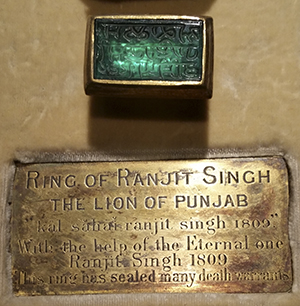

HEADQUARTERED in Palo Alto, the Sikh Foundation International will soon be celebrating its 50th anniversary. A “golden gala” will take place May 5 at the Asian Art Museum in San Francisco to coincide with an exhibit, “Saints and Kings: Arts, Culture, and Legacy of the Sikhs,” which just opened last week.
Several distinguished guests will attend, including Navtej Sarna, India’s current ambassador to the U.S., who just happens to be an author, a traveler, a columnist and a Leonard Cohen fan. What a combination.
Following the gala dinner, over the weekend of May 6-7, an elaborate conference will take place at Stanford University. “Advancing Sikhs With Education” will feature numerous speakers, including current and former parliament members of India, Canada and the United Kingdom.
The local history is quite fascinating and you don’t need to be a Sikh, or even religious at all. To make a long column short, the Sikhs were among the first Indian immigrants to North America, arriving in the late 19th century, after which they came to the West Coast by the thousands in the early 1900s. Their legacy was inseparable from the growth of the agriculture industry in California, partly because the Punjab region of India was farming country, and even today the Sikhs are among the most successful farmers in the world.
The Sikh Foundation began in 1967 to promote the heritage and future of Sikhism. A nonprofit and nonpolitical charity, it strives to pass on Sikh heritage to the growing diaspora in the West, introducing us to the “ethics, mysticism, arts, literature and heroism of the Sikhs.”
Most of this comes through in the “Saints and Kings” exhibit. It’s a small show, tucked away in a few ample spaces on the second floor of the building, but the entirety of it is drawn from the Asian Art Museum’s Sikh art collection–the largest in the U.S., mind you–and some serious gems are included. For example, dated 1812-13, a precious emerald and gold ring once owned by Maharaja Ranjit Singh (no relation) is on display in a small case.
A seal ring, it was both an item of adornment and statecraft, used by the maharaja to seal official documents or for other matters of state that required his imprimatur. The velvet case has two brass plaques, one of which says, “This ring has sealed many death warrants.” Known as the Lion of Punjab, Ranjit Singh united previously disparate Sikh kingdoms to create the Sikh Empire in the early half of the 19th century. One of his contributions was the renovation of the holiest place of Sikhism, the Golden Temple in Amritsar. He was the one who covered the structure with gold, giving the temple its English nickname.
Other items in the “Saints and Kings” exhibit include numerous paintings, lithographs and watercolors of Guru Nanak and other Sikh saints, as well as text panels, documentation, timelines, video and an 11-foot triangular battle flag displayed for the first time in over a decade. Many of the portraits, especially those of Ranjit Singh and his court, were created by British traveler Emily Eden.
Now, I am not a Sikh and my dad never claimed to be one either, so I’m not proselytizing here. It’s just that the journey of writing this column spurs memories. I was last in Punjab 29 years ago, in 1988, just four years after the massacre at the Golden Temple. We were unable to visit the facility because tensions were still very high, so much so that as foreigners my mom and I had to acquire special paperwork just to travel into Punjab. That’s how bad it was. I remember a mile of standstill traffic leading up to the temple because every single vehicle had to be searched. People sat in their cars for hours. We couldn’t even get close.
In any case, regardless of one’s path in life, the Sikhs play an integral role in the history of California. And that’s why they are celebrating. It’s as good as gold.



